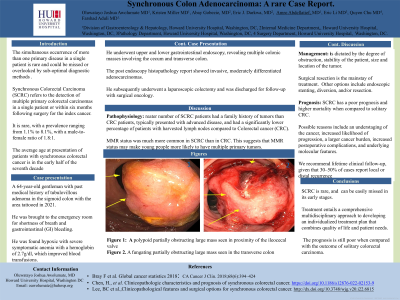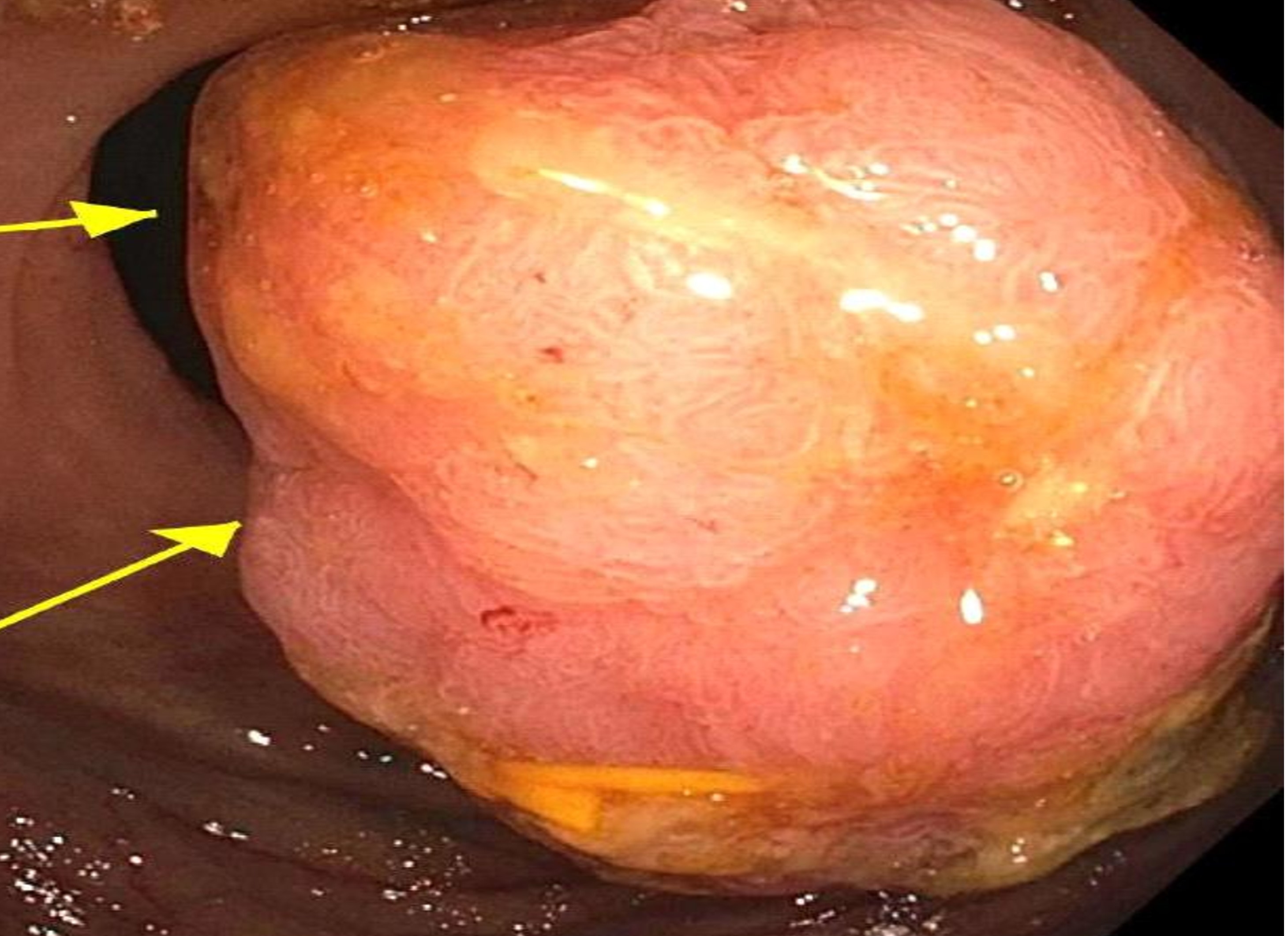Sunday Poster Session
Category: Colon
P0355 - Synchronous Colorectal Carcinoma: A Rare Case Report


Oluwatayo J. Awolumate, MD
Howard University Hospital
Washington, DC
Presenting Author(s)
Howard University Hospital, Washington, DC
Introduction:
Synchronous colorectal carcinoma is the identification of multiple primary colorectal carcinomas in a single patient. Synchronous colorectal carcinoma is rare, with a prevalence ranging from 1.1% to 8.1% and a male-to-female ratio of 1.8:1. The average age at presentation of patients with synchronous colorectal cancer is in the early half of the seventh decade.
Case Description/Methods:
A 64-year-old gentleman with a past medical history of tubulovillous adenoma in the sigmoid colon, with the area tattooed in 2021, was brought to the emergency room for shortness of breath and gastrointestinal (GI) bleeding. He was found hypoxic with severe symptomatic anemia with a hemoglobin of 2.7 g/dL, which improved with blood transfusions. He had an upper and lower gastrointestinal endoscopy procedure after initial resuscitation, with findings of multiple colonic masses involving the cecum, a hepatic flexure mass, and a sigmoid mass, as shown in figures 1 and 2. The postoperative histopathology report showed multiple primary synchronous tumors (invasive moderately differentiated adenocarcinoma), no evidence of metastases to the liver, and one out of the twenty-seven lymph nodes biopsied positive for metastatic carcinoma. He subsequently underwent a laparoscopic colectomy and was discharged for follow-up with surgical oncology.
Discussion:
Chen et al. conducted a study that revealed that a higher number of SCRC patients had a family history of tumors than CRC patients, typically presented with advanced disease, and had a significantly lower percentage of patients with harvested lymph nodes compared to CRC. The study also found that MMR status was much more common in SCRC than in CRC.
The location, size, and degree of primary tumor-related symptoms often dictate the initial steps in clinical management for patients with synchronous metastatic disease. Surgical resection is the mainstay of treatment in resectable tumors. As is the standard initial treatment for patients with resectable CRCs, the index patient had surgical resection of the tumor and underwent further evaluation for adjuvant chemotherapy as an outpatient.
Various studies suggest that the prognosis of patients with SCRCs may be the same, better, or worse than that of solitary CRC. Synchronous CRC has been associated with a poor prognosis and higher mortality when compared to solitary CRC. A lifetime clinical follow-up of patients after treatment completion is highly recommended, given that 30–50% of cases report local or distal recurrences.


Disclosures:
Oluwatayo Awolumate, MD, Kristen E. Miller, MD, Abay Gobezie, MD, Eric J. Darkwa, MD, Amro Abdellatief, MD, Eric Li, MD, Quyen Chu, MD, Farshad Aduli, MD. P0355 - Synchronous Colorectal Carcinoma: A Rare Case Report, ACG 2025 Annual Scientific Meeting Abstracts. Phoenix, AZ: American College of Gastroenterology.
